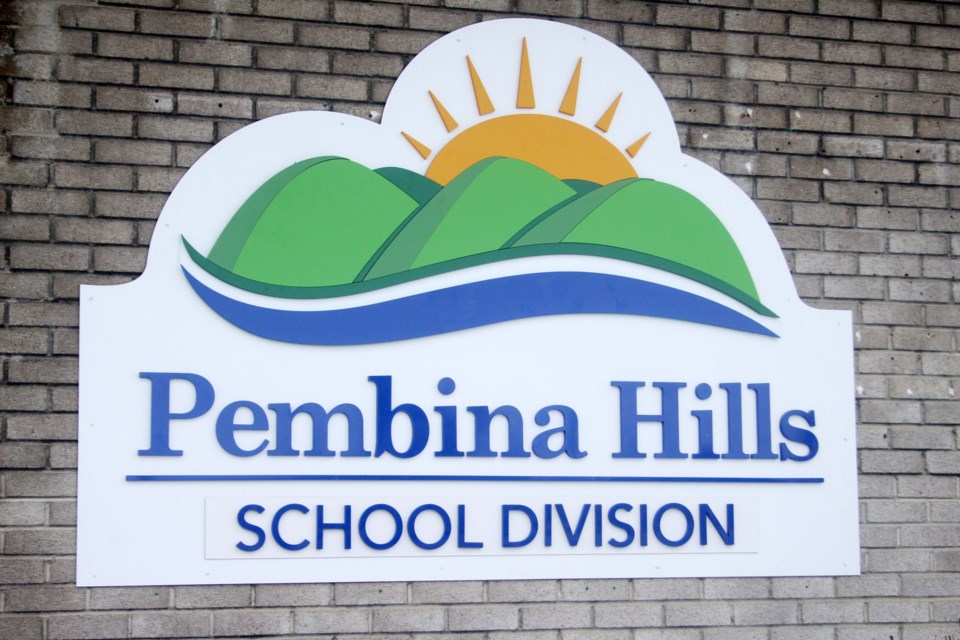Graduation rates for Pembina Hills School Division students coded as “special education” have steadily increased over the past five years and continues to surpass the province, according to the Student Services Assurance Report presented to trustees Jan. 15.
Director of student services Rob McGarva presented these statistics as part of his report detailing his department’s activities over the past year.
From 2014 to 2016, the five-year completion rates among those students averaged out to 66 per cent, while the provincial average is 63 per cent.
From 2016 to 2018, the completion rate locally climbed to 75 per cent, while the provincial average crept up to 68 per cent.
“To me, that’s good progress that we’ve made,” McGarva said, adding that you would never expect the high school completion rate to be 100 per cent.
In terms of Provincial Achievement Test (PAT) results, the number of special ed students achieving an acceptable standard in Pembina Hills has risen from 53 per cent in 2014-2016 to 55 per cent in 2016-2018. Meanwhile, the provincial average has fallen from 48 per cent in 2014-2016 to 47 per cent in 2016-2018.
RTI Levels
A decidedly less positive aspect of the report was an increase in special needs students requiring a high level of supports under the Response to Intervention (RTI) model.
RTI refers to a six-tier model that indicates what level of supports a student may require. Level 1 students require little to no support and comprise the majority of local students, while Level 6 students require constant attention. In 2013-2014, there were 36 local students identified as Level 6 and 66 identified as Level 5. In 2019-2020, there are approximately 75 Level 6 students and 111 Level 5 students.
Trustee Jackie Carson asked McGarva if this was the trend throughout the Alberta, and he indicated that it was, based on discussions with his counterparts.
Trustee Wendy Scinski asked if all 75 students required assistance in getting to and from school.
McGarva indicated that would be the case for the majority of students, particularly with in-town buses where a number of Level 6 students could be clustered.
“Last year we clarified that (assisting these students with their transportation) was a school responsibility,” he said.
Scinski later added that she believe the general public doesn’t understand the high level of needs that these kids have.
Satisfaction survey
Another troubling area was the satisfaction survey results among parents of children receiving special support, as the percentage of those parents expressing high to moderate satisfaction with the supports they received had dropped from about 94 per cent in 2015 to 80 per cent in 2019.
However, McGarva pointed out that the number of teachers expressing high to moderate satisfaction had increased from 86 per cent in 2017 to 91 per cent in 2019.
He suggested the lower satisfaction among parents may be due to the perception that “special support doesn’t look special anymore” when those supports are provided regularly. He also suggested that parents may not always know what they want in terms of special services, using one example of a mother who insisted on having an IPP (Individualized Program Plan) for her daughter without really knowing what the goals of that plan would be.
“I still think it’s important to talk to parents, because I don’t want them to feel dissatisfied. But there might be an education component to the talks.”
Suspensions
Students being caught vaping in classrooms, or bathrooms were the root cause of the majority of suspensions in Pembina Hills in 2018-2019.
There were a total of 175 incidents that resulted in out-of-school suspensions last year. Approximately 50 of these incidents were tied to smoking/vaping, while 37 involved fighting/bullying. Students using inappropriate language or behaviour resulted in 28 suspensions.
There were also 14 suspensions related to drugs, nine related to alcohol, three related to truancy and the rest fell into a “miscellaneous” category. On the plus side, McGarva said there had been no expulsions of students in over a year.
“I think that … speaks to how well schools are working with kids,” he said.
Bill 201
McGarva said one of the challenges they are now dealing with are new requirements for epinephrine auto-injectors as a result of Bill 201, also known as the Protecting Students with Life-Threatening Allergies Act.
Bill 201, which came into force Jan. 1, 2020, requires every division to develop a policy with strategies to reduce the risk of exposure to “anaphylactic causative agents” in classrooms and school common areas.
The legislation also requires mandatory training for school staff to deal with life-threatening allergies and a communication plan for the dissemination of information on these allergies to students and parents.
As well, it also requires that each school board ensure a minimum of one epinephrine auto-injector is maintained in each school operated by said board. Auto-injectors are used to deliver an emergency treatment of adrenaline (epinephrine) to patients with anaphylaxis.
The problem, McGarva indicated, is that they’re required to have these auto-injectors on side, the province hasn’t worked out how they’re going to get them.
Last year, there was a major shortage of EpiPen auto-injectors within Canada and when all schools go to buy them, “demand will be a problem.”



